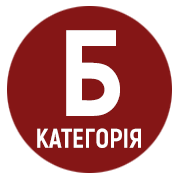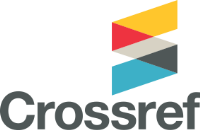Guidelines for Authors
TECHNICAL REQUIREMENTS FOR ARTICLE DESIGN:
Sheet format – A4 (210 x 297 mm).
Text editor MS Word 97-200, font – Times New Roman, № 14, interval – 1,5, without tabs and hyphens.
Page parameters: format A 4, orientation – portrait, margins: top – 2.0 cm, bottom – 2.0 cm, left – 2.0 cm, right – 2.0 cm. Indentation – 1.25 cm.
The volume of the article – no less ten printed pages (no less 0.5 of a printed sheet without annotations and literature).
Number of authors – no more than three.
Captions to pictures, tables are typed in size 11.
Schemes, compositions consisting of particular elements, figures, drawings and other objects should be grouped as one object.
ARTICLE STRUCTURE:
▪ UDC index – indicated in the first line of the page and left aligned, bold types.
▪ DOI index – left aligned under UDC
▪ Title of the article (in Ukrainian) – capital letters, bold
▪ Full name, surname and patronymic of the author (s) of the article in full – bold
▪ Information about the author (s) – academic title, scientific degree, position; full official name of the institution (institutions) – italics; personal e-mail address;
▪ ORCID ID index (Registration at https://orcid.org/); center alignment
▪ Abstract in Ukrainian – 10-12 lines, key words (5-7 words) – italics
▪ The main text of the article – Times New Roman, 14 pt, in a structured form with the following highlited elements (highlighted in bold):
- Formulation of the problem;
- Analysis of recent research and publications;
- Formulation of the purpose of the article;
- Presentation of the main material (with full justification of the results);
- Conclusions (with prospects for further explorations in the field).
The list of used sources and literature is compiled in alphabetical order in compliance with the requirements (National Standard of Ukraine SSTU 8302: 2015 ‘Information and documentation. Bibliographic reference. General provisions and rules of compilation’).
Sources are given in square brackets (for example, [3, p. 43], [11, p. 39-43]). The source number and page number are separated by a coma with space, the source number – by a semicolon. The first figure is the number of the source in the bibliography, the second is the page number. When linking to site pages access dates of the sources cited should be provided. Names of periodicals (journals) are drawn up in accordance with the official Latin spelling by the ISSN registration number. A digital DOI (if available) must be added to the source.
References must be drawn up in the style of the APA (American Psychological Association) ( https://apastyle.apa.org/instructional-aids/reference-examples.pdf). All sources listed in Cyrillic must be transliterated and additionally translated into English, the translation must be in square brackets; at the end you should indicate the language of the original in square brackets. The website http://ukrlit.org/transliteratsiia offers the translation of the Ukrainian text into Latin.
The title of the article in English – all capital letters, bold, centered, up to ten words.
▪ Surname, name of the author (s) of the article in full (in English) – bold, centered.
▪ Information about the author (s) in English – information about the author (s), place of work, centered
Abstract in English (Abstract) – (no less 2500 characters with spaces, including keywords) must be written in good English according to the requirements of international scientometric databases
The abstract should contain the following elements:
- Problem – Introduction.
- Purpose.
- Methods.
- The main results of the study – Results.
- Scientific novelty of research results – Originality.
- Conclusions and author’s specific proposals – Conclusion.
- Keywords (5-7 words), italics – Keywords.
The text of the author's resume should be concise and clear, free from secondary information, unnecessary introductory words, general and insignificant wording. The use of electronic translators should be avoided when creating an English annotation.
The EMERALD website provides examples of how not to (http://www.emeraldinsight.com/authors/guides/write/abstracts.htm?part=3&) and how to write an annotation.
The editors reserve the right to submit manuscripts for external review and will check manuscripts for academic plagiarism in the Unicheck system. Manuscripts are not returned.
The article should be carefully reviewed and edited.
If the article is submitted in English, the extended annotation is submitted in Ukrainian.
In case of non-compliance of the submitted work with the points of the requirements the editorial office will return the materials to the authors for revision.
The acceptance notification of the article for publication is sent by the editorial board to the author’s e-mail address after plagiarism and peer review.







